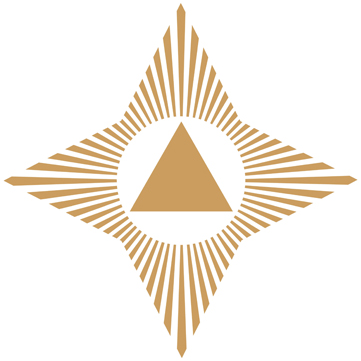Martinus’s life and upbringing
Martinus came from poor circumstances and received very little education. He was, however, driven by great curiosity, a desire to learn and a deep commitment to other people. He incorporated these characteristics during his many years of work with spiritual science – and his legacy lives on.
Martinus was born in 1890 in Sindal, a small town in the north of Jutland. He was born out of wedlock to the housekeeper of a large farming estate called Kristiansminde and was in all probability the son of the estate owner. As an illegitimate child he was fostered out to his uncle and aunt and thus grew up with them. They had many children, but they lovingly welcomed this extra child.
His foster family was very short of money, and the teaching in the local village school was focussed mainly on verses of hymns, the catechism and a little arithmetic, geography and Danish history. In the local evangelical church, Martinus was told that, as an illegitimate child, he was doomed to eternal damnation. However, being a bright boy, he did not believe this.
Even then, Martinus felt a close, personal relationship with God, but his God was loving – not strict and punitive. Later, he even considered becoming a missionary, but gave up the idea because he could not come to terms with the interpretation of Christianity of that time.

Moskilvad in Sindal – Martinus’s childhood home

Martinus at 30 years old, 1920
From dairyman to writer
After his confirmation Martinus was apprenticed as a blacksmith but, being very slight, the work was too strenuous for him. Instead, he ended up training as a dairyman and spent the following years working in various dairies around the country. In 1917 he moved to Copenhagen, where he worked as a watchman and a postman, among other things, before finally getting an office job at Enigheden dairy.
Outwardly there was nothing much to suggest that Martinus would have such an unusual life. But in 1921, the then 30-year-old man had an epoch-making experience.
Through a workmate, Martinus borrowed a book about spiritual matters. In this connection he decided to try meditation, and it changed his life. During a mediation on God, he experienced the opening of a channel in him that gave him insight into the spiritual world, its laws and significance for all life. He experienced being enveloped in a very strong white light, and then a golden light, which – as he later described – left him “… in a state of conscious immortality with the ability to see that only life exists and that darkness and suffering are but camouflaged love, and that God’s being is present in everything and everyone.”
The experiences, which he later described as a “cosmic initiation,” were so epoch-making that Martinus felt compelled to describe in writing the realities he saw before him.
Great interest in Martinus
During the following decades, Martinus worked tirelessly to formulate the loving and optimistic world picture he envisioned. This resulted in a long series of books and articles, Livets Bog (The Book of Life), vols. 1–7 being his main work. An ever-widening circle of friends and enthusiasts contributed practically and financially to the dissemination of his works at home and abroad.
Later, he was able to establish, among other things, the Martinus Institute in Frederiksberg, Copenhagen – or Livets Bog’s Bureau as it was originally called – and the Martinus Centre, an educational centre in Klint, Odsherred, Denmark. Martinus’s works have been translated into over 20 languages and are read and studied today by thousands of people, mainly in Scandinavia but also in other parts of the world.
Until his death in 1981, Martinus continued his modest and hard-working life of writing, drawing and talking to people about his spiritually scientific world picture – always in close collaboration with his many co-workers and others who were interested in his “Cause”, as he called it. The story of his life is told in some detail in Martinus’s Memoirs edited by Sam Zinglersen. Watch film footage of Martinus giving a lecture in 1956.
Prior to his death, Martinus transferred the rights to his life’s work to the self-governing institution that was given the task of managing his legacy. It later became a foundation that continues to develop both the Institute and the educational centre with the aid of a small number of employees and a large number of volunteers, who jointly keep Martinus’s world picture and its dissemination alive and up to date.

Martinus signing Christmas letters, 1969
Follow in Martinus’s footsteps
Martinus’s legacy is alive and well. You can gain more insight into his life and works here:
The Martinus Institute, where Martinus lived and worked for several decades until his death, houses many things including his cosy little flat, which is preserved in its original condition.
Martinus’s childhood home in Sindal is also preserved and open to visitors all year round. You can visit his modest rooms and their beautiful countryside setting.
The Martinus Centre in Klint – particularly in the summer – was and is a meeting place for those from near and far who are interested in Martinus. Drop in on the centre’s plant-based restaurant and café or take a look at our programme of courses.



